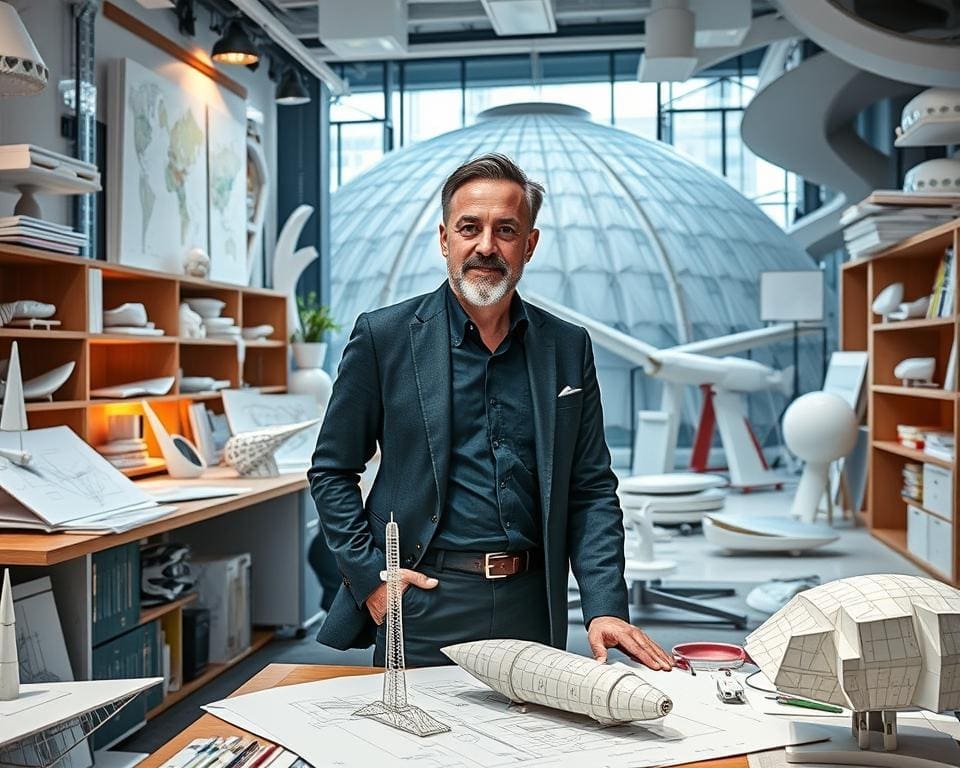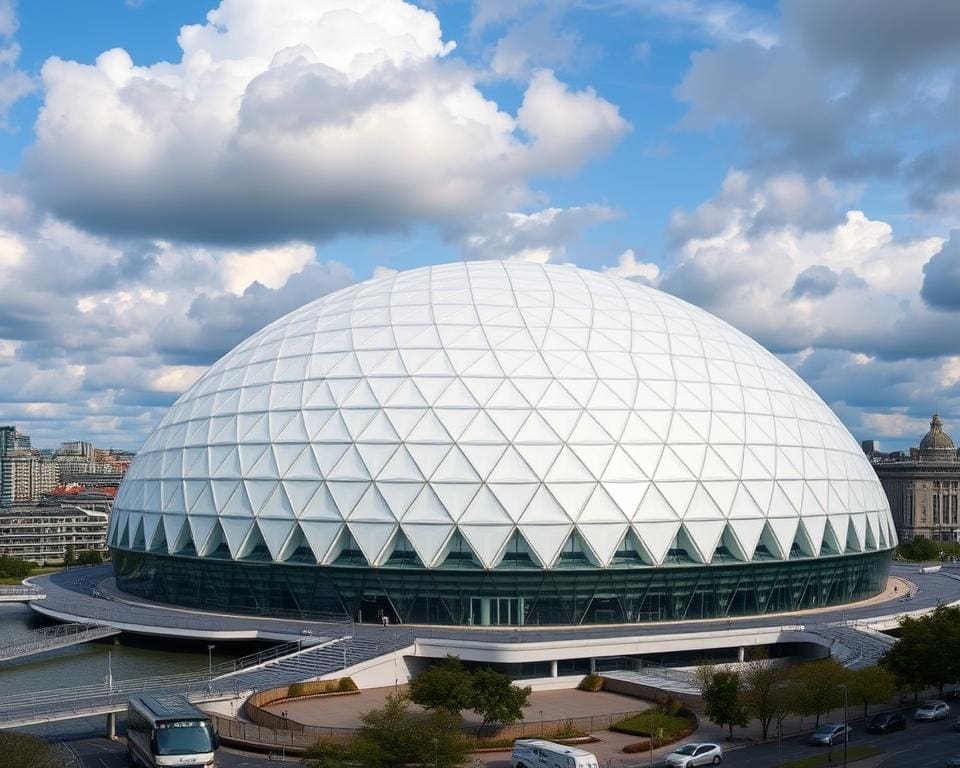Richard Rogers, a name synonymous with innovation in London architecture, stands as the visionary behind the remarkable Millennium Dome design. His unique approach combined functionality with artistic flair, making him a pivotal figure in modern architecture. The Dome itself, a symbol of a new era, reflects Rogers’ commitment to sustainability and creativity, showcasing how architectural brilliance can transform public spaces into cultural landmarks. As we delve deeper into the life and works of this extraordinary Richard Rogers architect, we will uncover the influences that shaped his illustrious career.
Introduction to Richard Rogers
Richard Rogers, a prominent figure in contemporary architecture, has left an indelible mark on the built environment. His journey began in a dynamic cultural setting that nurtured his creative impulses, laying the groundwork for what would become a remarkable career. Understanding the key influences on Richard Rogers sheds light on the experiences that shaped his visionary approach to architecture.
Early Life and Influences
Born in Florence in 1933, Richard Rogers grew up in a family that valued artistic expression. His father, a successful businessman with a passion for art, and his mother, a versatile painter, sparked an interest in creativity from a young age. This enriching environment informed his perspective on design, highlighting the synergy between form and function. The cultural backdrop of post-war Europe profoundly affected his early years, encouraging him to appreciate the importance of architecture in society.
Education and Architectural Philosophy
Rogers pursued formal education at the Architectural Association School of Architecture in London. Here, he cultivated his architectural philosophy, heavily influenced by modernist ideals. His approach stressed the significance of sustainability, functionality, and the integration of technology within architectural design. Rogers’ work often reflects a commitment to creating spaces that are not only aesthetically pleasing but also serve a greater purpose within their communities. This outlook became fundamental in shaping his future projects and establishing his reputation as a pioneer of modern architecture.

Richard Rogers: Mastermind of the Millennium Dome Design
The conception of the Millennium Dome represents a significant chapter in innovative architecture, showcasing Richard Rogers’ remarkable vision and the collaborative spirit of the project. As the Millennium Dome architect, Rogers faced the challenge of creating a structure that not only fulfilled the client’s ambitious objectives but also resonated with public expectations. This process involved extensive discussions, careful planning, and the integration of sustainable practices, reflecting the demands of a new century.
Conceptualisation of the Dome
Rogers envisaged the Millennium Dome as more than just an exhibition space; it aimed to be a symbol of optimism for the new millennium. His approach combined functionality with a striking aesthetic, allowing for vast open areas that could adapt to various uses. By prioritising space and light, the design embraced the contemporary ethos of flexibility and accessibility. The collaborative efforts with various stakeholders ensured that the structure truly encapsulated the spirit of the time, enabling it to become an iconic landmark.
Innovative Design Features
The Millennium Dome design features showcase a plethora of advancements in construction and materials. The most striking aspect is its expansive fabric roof, which stretches over 100 metres in height and embodies the essence of innovative architecture. This striking canopy utilises eco-friendly materials, further underscoring Rogers’ commitment to sustainability. These elements not only enhance the visual appeal but also connect the building to its environmental context. Such distinctive components articulate Rogers’ architectural values, demonstrating how modern architecture can seamlessly merge practicality with aesthetic prowess.
The Role of Richard Rogers in Modern Architecture
Richard Rogers has significantly shaped modern architecture with his distinctive techniques and innovative approaches. His signature architectural style, characterised by high-tech design and transparent structures, has redefined the relationship between form and function in urban environments. This section highlights his core techniques and illustrates how his projects have left a lasting impact on London’s architecture.
Signature Style and Techniques
Rogers’ projects showcase a unique blend of functionality and aesthetic appeal. His commitment to the use of modern materials such as steel and glass reflects a forward-thinking vision. Notable features of his signature style include:
- Exposed structural elements: These provide an honest representation of building mechanics, enhancing visual interest.
- Flexible interior spaces: This adaptability allows buildings to serve multiple purposes throughout their lifespan.
- Sustainability: Rogers prioritised eco-friendly solutions, integrating green technologies into his designs.
These techniques not only meet practical needs but also inspire creativity within the architectural community.
Impact on London’s Architectural Landscape
Through various Richard Rogers projects, he has transformed the skyline of London while influencing future generations of architects. Landmark structures such as the Lloyd’s Building and the Millennium Dome exemplify how his vision promotes urban revitalisation. The impact of his work can be seen in:
- Innovative public spaces: Rogers created vibrant environments that encourage social interactions.
- Increased aesthetic consciousness: He inspired a movement towards more visually exciting designs in London’s architecture.
- Focus on community needs: His designs emphasise accessibility and functionality, contributing to improved urban living.
Richard Rogers’ contributions continue to resonate, as his architectural legacy shapes London’s identity and the future of urban design.
Milestone Projects by Richard Rogers
Richard Rogers has left an indelible mark on modern architecture through his innovative and striking designs. His approach combines functionality with an aesthetic that pushes the boundaries of conventional building methods. The following section highlights some of the key buildings and their significance, as well as the numerous accolades that recognise his exceptional contributions to the field.
Key Buildings and Their Significance
Among the pivotal projects that showcase Richard Rogers buildings, the Centre Pompidou in Paris stands out with its revolutionary design. The building’s exposed structural elements and vibrant colour scheme challenge traditional architectural norms, making it a landmark of contemporary art and architecture. Similarly, the Lloyd’s Building in London embodies technological advancement, featuring an innovative ‘inside-out’ design that displays its services prominently, symbolising transparency and functionality.
- The Centre Pompidou: A landmark for modern art and architecture.
- The Lloyd’s Building: An engineering marvel that redefines urban spaces.
- The Millennium Dome: A bold statement on a global scale.
- Oxygen Park: An exemplary case of sustainable design.
Acknowledgements and Awards
Throughout his illustrious career, Richard Rogers received numerous Richard Rogers awards reflecting his influence on architecture and design. His recognition includes the RIBA Royal Gold Medal and the Pritzker Architecture Prize. Such accolades underline his status as a leading figure in significant architecture projects, inspiring future generations of architects and designers.
The Millennium Dome: A Cultural Landmark
The Millennium Dome stands as a striking symbol of British ambition and creativity. Originally conceived to mark the turn of the millennium, its formation was deeply rooted in a desire to celebrate the cultural achievements of the nation. As a grand exhibition space, it aimed not only to highlight British innovations but also to foster a sense of unity and pride among the public.
Historical Context and Purpose
The Dome emerged at a time when optimism flourished, reflecting hopes for a brighter future as the new century approached. Officials intended it to serve as a showcase for various aspects of British society, from art and technology to environmental initiatives. Duing its planning phase, great emphasis was placed on the Dome’s potential to become a landmark that would represent progress and inspiration.
Public Reception and Controversies
The public reception of Millennium Dome shifted dramatically, evolving from initial excitement to pronounced criticism. Many viewed it as a magnificent symbol of pride, while others critiqued its functionality and long-term viability. Controversies surrounding the Dome included debates over its costs and the eventual failure to attract sufficient visitors during its initial run. This polarised reception highlighted the broader relationship between cultural projects and public perception, ultimately shaping the narrative around what the Dome represents today.
Legacy of Richard Rogers
Richard Rogers’ legacy is a powerful testament to the transformative role architecture plays in our lives. His innovative design approach reshaped urban landscapes while emphasising the importance of sustainability and modernism. The enduring influence on future architects is evident, as many professionals draw inspiration from Rogers’ ability to harmonise aesthetics with functionality, creating spaces that are both beautiful and purposeful.
The lasting impact on architecture that Richard Rogers has left behind is reflected not only in the buildings he designed but also in the principles he championed. His commitment to transparency and structural honesty reshaped public perceptions of architectural design, encouraging a generation of architects to push boundaries and engage with their environments in thoughtful ways. This legacy resonates within the architectural community, serving as a foundation for addressing contemporary challenges.
In conclusion, Richard Rogers’ vision continues to inspire and inform the architectural discourse, his philosophies permeating the collective consciousness of today’s architects. As we look to the future, his contributions remind us of the potential architecture holds in changing our urban environments for the better, ensuring that his influence remains indelible for years to come.









